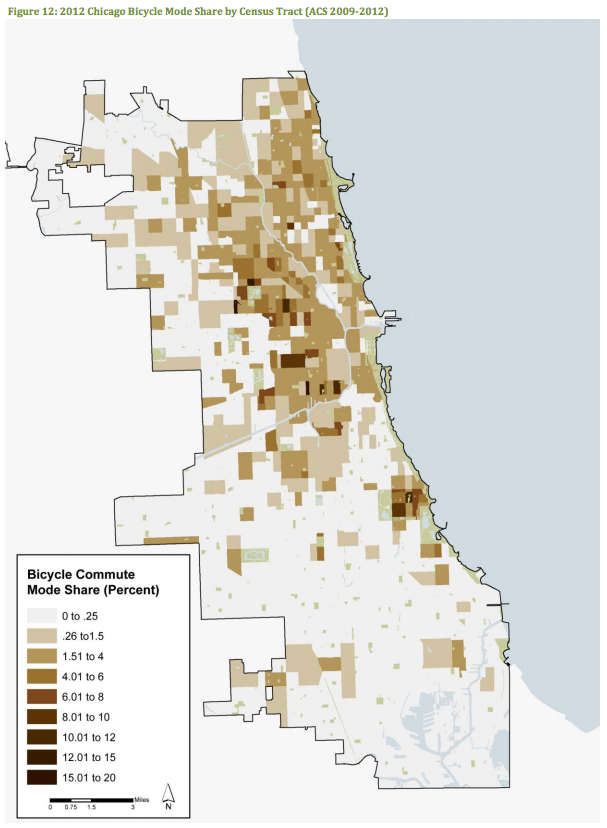Last month, Andrew Keatts of Rice University's Kinder Institute for Urban Research had a great post on something that consistently bothers me: "Memo to Cities: Most Cyclists Aren't Urban Hipsters."
Keatts looked at the demographics of people who bike to work in Houston—technically, those who are lumped into the category of "commute by bike, taxi, or motorcycle" by the U.S. Census—and which populations are most likely to do it.
What he found may surprise you, especially if you're a member of the media who dismisses cyclists as faddish, privileged post-adolescents:
Everywhere he goes, he says, he sees a particular type of cyclist: a working-class person – usually a minority and often a recent immigrant – riding to work on whatever type of bike he can get his hands on. Those cyclists are men and women for whom biking isn’t an environmental cause or a response to an urban trend but a means of transportation that’s cheaper than a car and faster than walking.
[snip]
Nationally and in cities across Sun Belt, the bulk of those who bike to work – based on our best available data – are low-income people. Nationwide, 49 percent of people in the cycling category earn less than $25,000 per year. In Houston, the figure is closer to 42 percent.
And more than 40 percent of commuters in the cyclist community living in Austin, Dallas, Los Angeles, Phoenix, and San Antonio earn less than $25,000 per year.
I was curious as to how that played out here in Chicago, in part because Sun Belt cities have, unfairly or not, a reputation for having less-than-great public transportation. Maybe it's different here, for that or other reasons.
Turns out, not so much. There are obviously a lot more people who drive alone or take public transit than people who commute by bike. So I looked at it by the percentage of people who use each mode, using 2014 data. And among the people in Chicago who do commute by bike—or taxi, or motorcycle—there's an interesting pattern. Here's how it breaks down.

Bike commuters are over-represented among people who make $10,000 to $25,000, as well as people who make more than $75k. This matches up with findings from the Active Transportation Alliance, using older but more fine-grained data:

Biking is highest among the poor, declines with increasing income, and then goes up a bit among the highest income bracket—perhaps because those with the most money can afford to live in the city center, likely placing them near their jobs and making bike commuting more convenient.
The percentage of people who bike to work is still small, but it also represents a population in the low five figures, and the areas with the highest percentage of bike commuters are actually on the West and South Sides. Again, from the ATA:

To borrow a term from Keatts, these are all too often "invisible cyclists," at least when it comes to building infrastructure. But they're there—on the streets and in the data.



